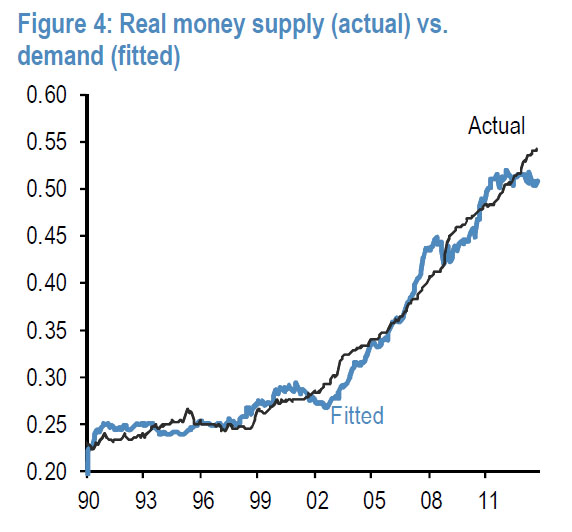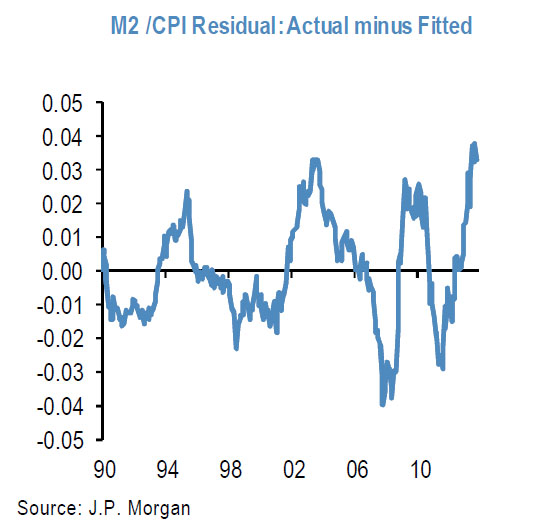Financial Musical Chairs… But When The Music Stops, Who Will Have A Seat?
Posted By thestatedtruth.com on October 28, 2013
JP Morgan has a report out that is reviewed in part below. Everybody should take time to read it. The economy is being stimulated with excess liquidity like never before in history. When it slows or stops, we will have a Stanely Druckenmiller event, i.e., Druckenmiller said recently (September 11)….that financial markets could readjust to lower priced levels instantaneously upon changes in Fed policy. You can read what Stanely Druckenmiller said by clicking on the blue letters here (Stanley Druckenmiller Reviews Key Issues That In His Opinion Will Effect The U.S. Economy). J.P. Morgan says below….The amount of excess liquidity, i.e. the infamous “liquidity bubble” in the global fungible system is “the most extreme ever in terms of its magnitude”.
From JPM:
Excess money supply is currently at record high positive territory. The residual of the regression turned positive in May 2012 and has risen steadily since then. This is both because of real money supply increasing and money demand decreasing due to lower uncertainty (Figure 3). In particular, global M2 is up $3tr or 4.6% since the beginning of the year (to September), outperforming the Global CPI inflation index which is up by only 2% since then. Global M2 reached $66tr in September this year.
Of the $3tr increase in global M2 money supply in the first three quarters of the year, around $1tr is due to G4 countries, i.e. US, Euro area, UK and Japan. The remaining $2tr is due to EM countries, driven by strong bank lending growth in EM. As we highlighted last week, EM bank loan credit creation has been unaffected by the EM selloff in the summer and was running in July/August at a $170bn per month pace. So strong credit growth in EM economies continues to boost our measure of excess liquidity.
And the conclusion:
The rise in excess liquidity, i.e. the residual in the model of Figure 4, is supportive for risky assets especially when we compare the past nine months with the period between the end of 2010 and the beginning of 2012 when excess money supply was negative. Looking further back in Figure 4, we can see three major episodes of excess liquidity (i.e. positive residual): 1993-1995, 2001-2006 and Oct 2008-Sep 2010. These were periods of strong asset price inflation suggesting that excess liquidity could have been a factor supporting markets at the time. The current episode of excess liquidity, which began in May 2012, appears to have been the most extreme ever in terms of its magnitude.
To summarize:
- In just the first 9 months of 2013, DM countries have injected $1 trillion in liquidity sourced exclusively by central banks; EMs have injected another $2 trillion driven by bank loan demand.
- The total global M2 is over $66 trillion, growing at an annualized pace of over 6%.
- The amount of excess liquidity, i.e. the infamous “liquidity bubble” in the global fungible system is “the most extreme ever in terms of its magnitude”
Wise Dog Research, J.P. Morgan, Zero hedge
Comments
One Response to “Financial Musical Chairs… But When The Music Stops, Who Will Have A Seat?”
Leave a Reply
You must be logged in to post a comment.



Sausalito Ferry Schedule
Quality content is the important to be a focus for the users to pay a visit the site, that’s what this web page is providing.|